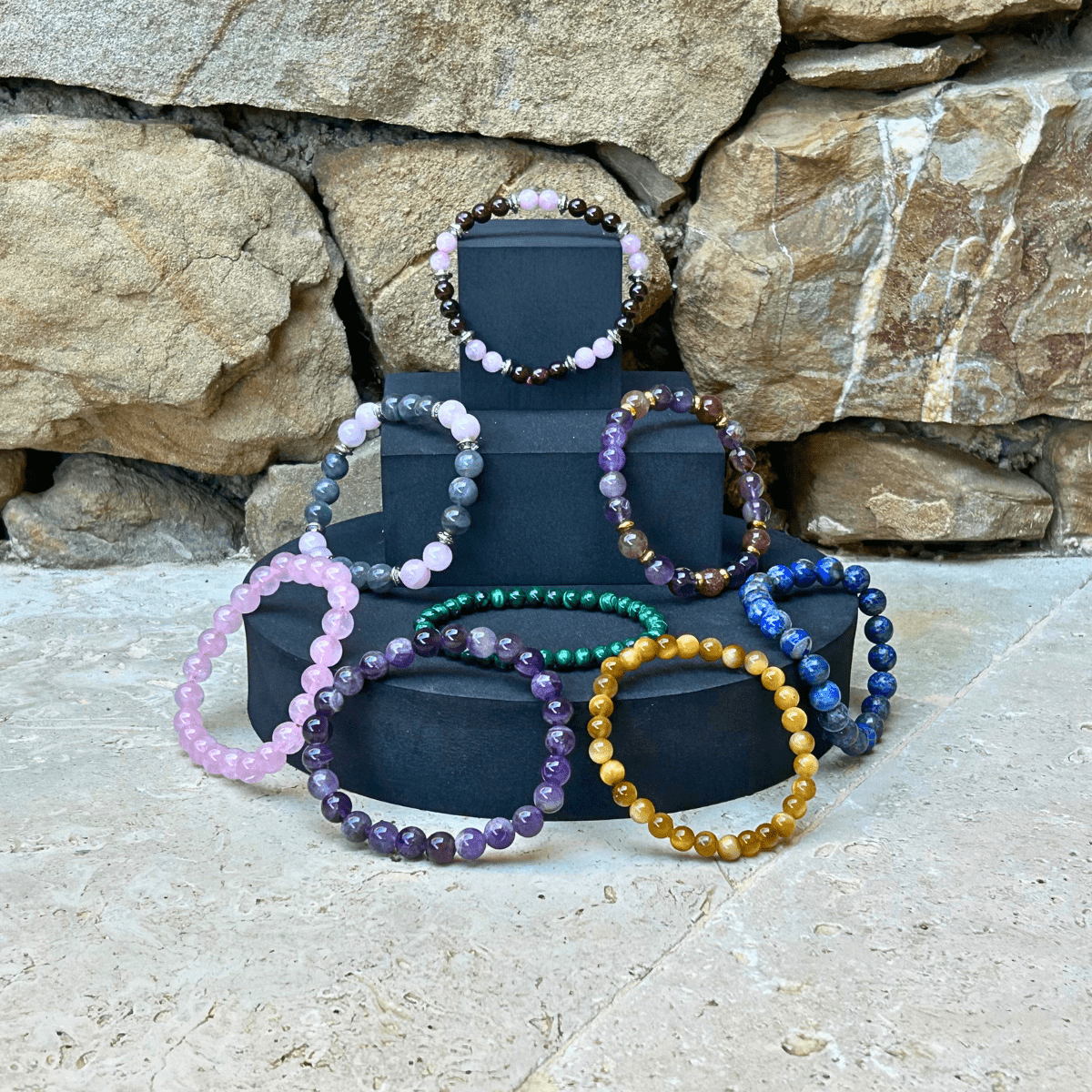The most famous and effective stones in lithotherapy:
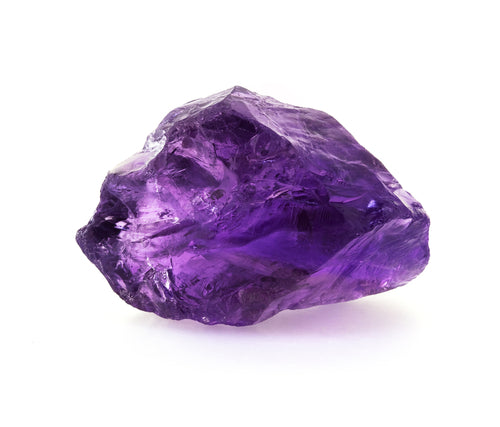
Amethyst
Amethyst is a stone from the quartz family, characterized by its deep purple color. Here are some of its features:
- Color: Amethyst is purple in color, ranging from pale purple to dark purple, almost black.
- Virtues: amethyst is often used in lithotherapy for its soothing, purifying and protective virtues. It is considered a stone of wisdom and spirituality, and can help calm the mind and promote meditation.
- Use: Amethyst can be used in different ways in lithotherapy, for example by wearing it as jewelry, placing it in a specific place in the home or office, or meditating with it.
- Origin: Amethyst is found mainly in South America, Africa, India and Australia. It is often extracted in mines or quarries, and can be cut for use in jewelry or decoration.
- Maintenance: to preserve its properties, it is recommended to regularly clean amethyst with clean water and recharge it by placing it in the sun or on a quartz cluster.

Rose Quartz
Rose quartz is a stone from the quartz family, characterized by its soft pink color. Here are some of its features:
- Color: rose quartz is soft pink in color, ranging from very pale pink to more intense pink.
- Virtues: rose quartz is often used in lithotherapy for its virtues of love, peace and emotional healing. It is considered a stone of tenderness and gentleness, and can help relieve negative emotions and strengthen romantic relationships.
- Use: rose quartz can be used in different ways in lithotherapy, for example by wearing it as jewelry, placing it in a specific place in the home or office, or meditating with it.
- Origin: rose quartz is mainly found in Brazil, India and China. It is often mined in mines or quarries, and can be cut for use in jewelry or decoration.
- Maintenance: to preserve its properties, it is recommended to regularly clean rose quartz with clear water and recharge it by placing it on a quartz cluster or leaving it in contact with lunar light.
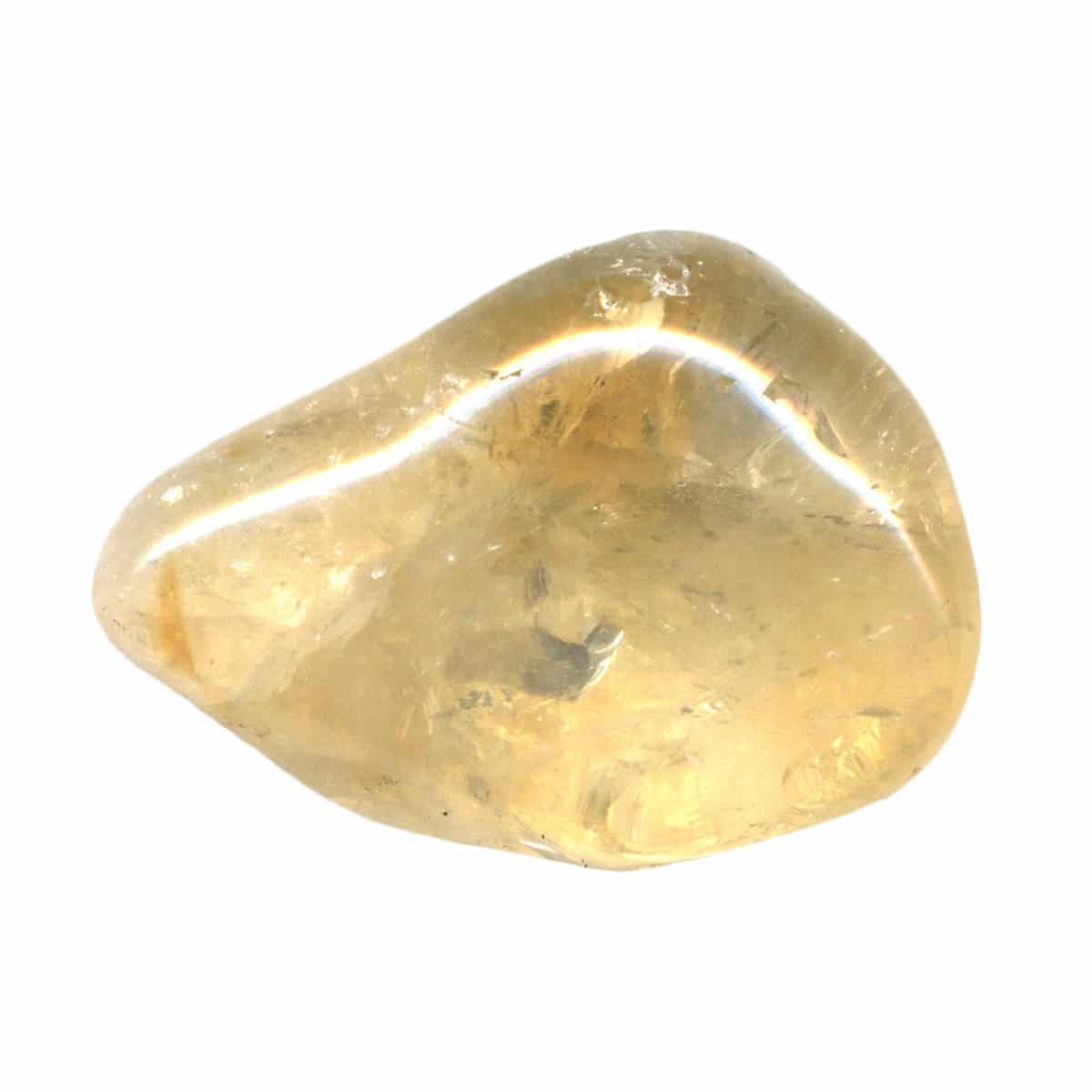
Citrine
Citrine is a stone from the quartz family, characterized by its yellow to golden color. Here are some of its features:
- Color: Citrine is yellow to golden in color, with shades ranging from pale yellow to deep gold.
- Virtues: citrine is often used in lithotherapy for its energizing, stimulating and purifying virtues. It is considered a stone of prosperity and abundance, and can help attract wealth and creativity.
- Use: Citrine can be used in different ways in lithotherapy, for example by wearing it as jewelry, placing it in a specific place in the home or office, or meditating with it.
- Origin: Citrine is mainly found in Brazil, Uruguay and Spain. It is often extracted in mines or quarries, and can be cut for use in jewelry or decoration.
- Maintenance: to preserve its properties, it is recommended to regularly clean citrine with clear water and recharge it by placing it on a quartz cluster or in the sun.

Black Tourmaline
Black tourmaline is a shiny black stone belonging to the tourmaline family. Here are some of its features:
- Color: black tourmaline is black or dark brown in color, with metallic highlights.
- Virtues: black tourmaline is often used in lithotherapy for its protective and purifying properties. It can help eliminate negative energies and strengthen the immune system. It is also known to promote emotional balance and mental clarity.
- Use: black tourmaline can be worn as jewelry, or placed in a specific location in the home or office. It can also be used in meditation to strengthen energy and vitality.
- Origin: Black tourmaline is found in many countries, including Brazil, India, Australia and the United States. It is often extracted in mines or quarries, and can be cut for use in jewelry or decoration.
- Maintenance: to preserve its properties, it is recommended to regularly clean black tourmaline with clean water and recharge it by placing it on a quartz cluster or under moonlight.
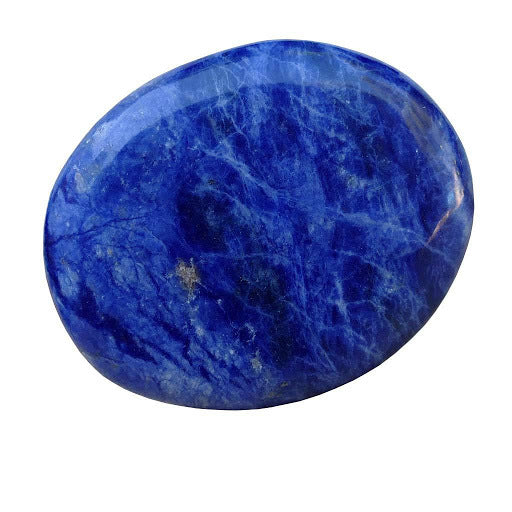
Lapis lazuli
Lapis lazuli is a semi-precious stone characterized by its deep blue color sprinkled with golden flakes. Here are some of its features:
- Color: lapis lazuli is blue in color with golden inclusions.
- Virtues: lapis lazuli is often used in lithotherapy to help improve communication and promote mental clarity. It is considered a stone of wisdom and truth, and can help build self-confidence and promote inner peace.
- Use: lapis lazuli can be used in different ways in lithotherapy, for example by wearing it as jewelry, placing it in a specific place in the home or office, or meditating with it.
- Origin: lapis lazuli is found mainly in Afghanistan, but also in Russia, Chile, Egypt and the United States. It is often mined in mines or quarries, and can be cut for use in jewelry or decoration.
- Maintenance: to preserve its properties, it is recommended to regularly clean lapis lazuli with clear water and recharge it by placing it on a quartz cluster or in the light of the moon.
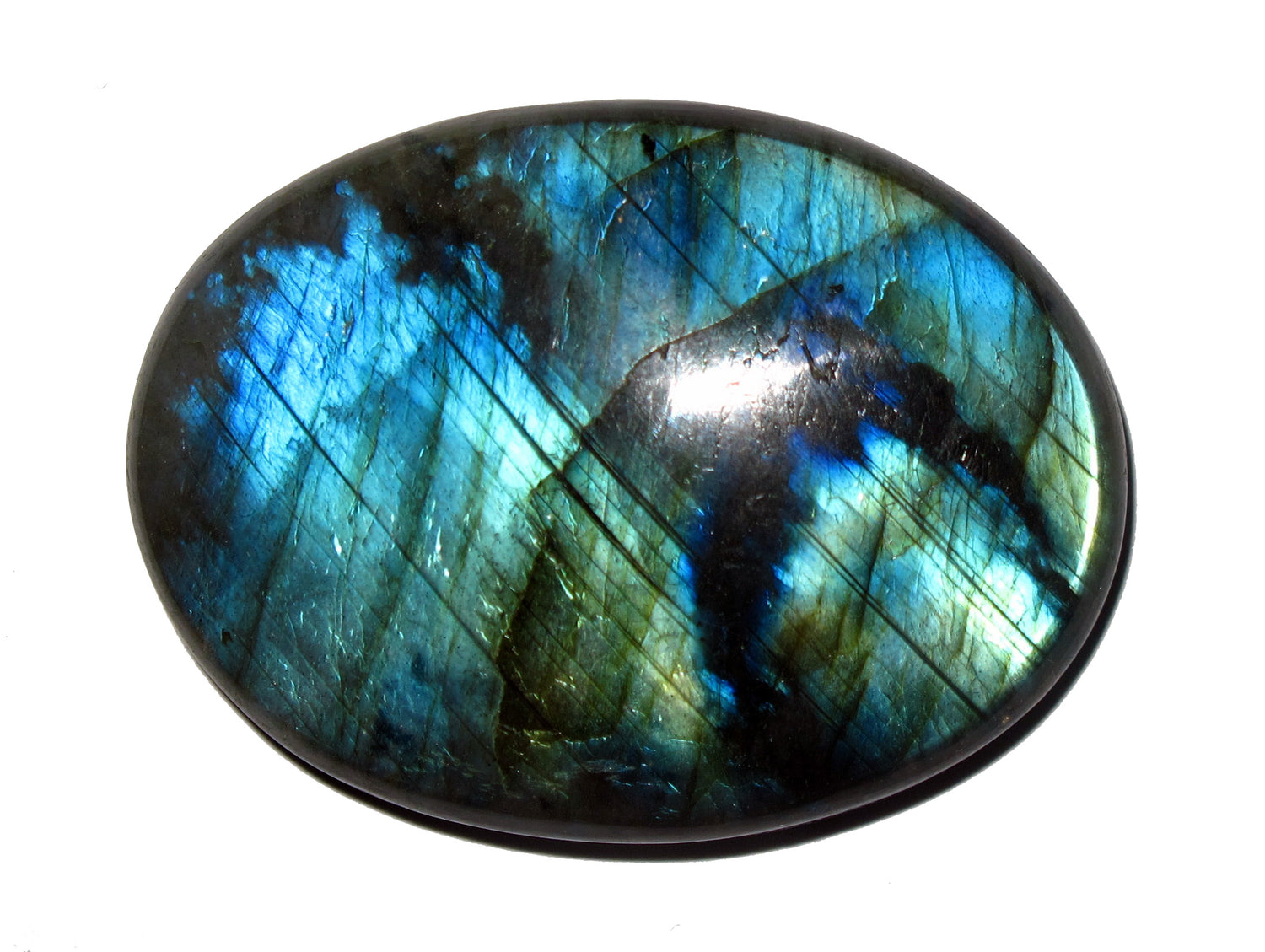
Labradorite
Labradorite is a stone from the feldspar family, characterized by its play of iridescent and shimmering colors. Here are some of its features:
- Color: Labradorite is gray in color, but it can have blue, green, golden or mauve reflections depending on the angle of the light.
- Virtues: Labradorite is often used in lithotherapy for its protective, soothing and regenerating virtues. It is considered a stone of transformation, capable of reducing stress and helping to overcome obstacles.
- Use: Labradorite can be used in different ways in lithotherapy, for example by wearing it as jewelry, placing it in a specific place in the home or office, or meditating with it.
- Origin: Labradorite is mainly found in Canada, Russia, Scandinavia and Africa. It is often extracted in mines or quarries, and can be cut for use in jewelry or decoration.
- Maintenance: to preserve its properties, it is recommended to regularly clean Labradorite with clear water and recharge it by placing it on a quartz cluster or leaving it under the light of the full moon.

Tiger's Eye
Tiger's Eye is a stone belonging to the quartz family, characterized by its golden reflections and dark bands. Here are some of its features:
- Color: Tiger's Eye is golden brown with shimmering reflections ranging from gold to red, including brown and black.
- Virtues: Tiger's Eye is often used in lithotherapy for its protective, stimulating and energizing virtues. It is considered a stone of self-confidence and courage, and can help build self-esteem and make informed decisions.
- Use: Tiger's Eye can be used in different ways in lithotherapy, for example by wearing it as jewelry, placing it in a specific place in the home or office, or meditating with it.
- Origin: Tiger's Eye is mainly found in South Africa, Australia and India. It is often extracted in mines or quarries, and can be cut for use in jewelry or decoration.
- Maintenance: to preserve its properties, it is recommended to regularly clean Tiger's Eye with clear water and recharge it by placing it in the sun or on a quartz mass.

The Moon Stone
Moonstone is a stone from the feldspar family, characterized by its pearly luminescence and its white, beige or gray color. Here are some of its features:
- Color: Moonstone is white, beige or gray in color, with a pearly luminescence that gives it an almost iridescent appearance.
- Virtues: moonstone is often used in lithotherapy for its soothing, balancing and protective virtues. It is considered a stone of femininity and fertility, and can help regulate hormonal cycles and promote fertility in women.
- Use: Moonstone can be used in different ways in lithotherapy, for example by carrying it as jewelry, placing it in a specific place in the home or office, or meditating with it.
- Origin: Moonstone is found mainly in India, Australia, the United States and Brazil. It is often extracted in mines or quarries, and can be cut for use in jewelry or decoration.
- Maintenance: to preserve its properties, it is recommended to regularly clean the moonstone with clear water and recharge it by placing it on a quartz cluster or exposing it to the light of the full moon.

Aventurine
Aventurine is a stone from the quartz family, characterized by its shimmering green color. Here are some of its features:
- Color: aventurine is green in color, with shimmering reflections often golden or silver.
- Virtues: aventurine is often used in lithotherapy for its soothing and harmonizing virtues. It is considered a stone of luck, prosperity and success, and can help calm negative emotions and build self-confidence.
- Use: aventurine can be used in different ways in lithotherapy, for example by wearing it as jewelry, placing it in a specific place in the home or office, or meditating with it.
- Origin: Aventurine is mainly found in India, Russia, China and Italy. It is often extracted in mines or quarries, and can be cut for use in jewelry or decoration.
- Maintenance: to preserve its properties, it is recommended to regularly clean aventurine with clear water and recharge it by placing it on a quartz cluster or letting it rest in the sun.
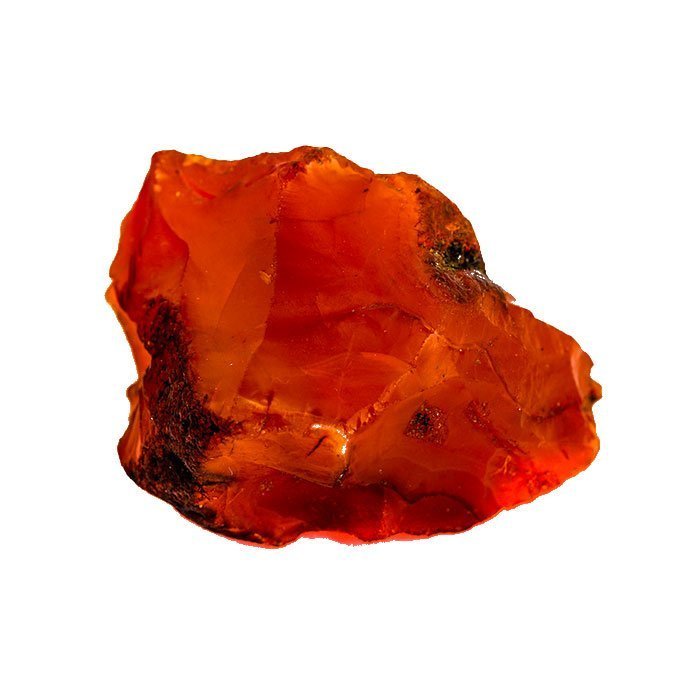
Carnelian
Carnelian is an orange to red-brown stone, which belongs to the quartz family. Check out some of its features below:
- Color: Carnelian is an orange to red-brown colored stone, sometimes with shades of yellow or pink. It can be opaque or translucent.
- Virtues: carnelian is often used in lithotherapy for its energizing, stimulating and comforting virtues. It is considered a stone of vitality and creativity, and can help build self-confidence and overcome fears and emotional blockages.
- Use: Carnelian can be used in different ways in lithotherapy, for example by wearing it as jewelry, placing it in a specific place in the home or office, or meditating with it.
- Origin: Carnelian is found mainly in India, Brazil, Uruguay and South Africa. It is often extracted in mines or quarries, and can be cut for use in jewelry or decoration.
- Maintenance: to preserve its properties, it is recommended to regularly clean the carnelian with clear water and recharge it by placing it on a quartz cluster or leaving it in the sun.

Agate
Agate is a stone from the quartz family, characterized by its diversity of colors and patterns. Here are some of its features:
- Colors: Agate can have a wide variety of colors, ranging from white to black to red, green, blue and purple. It may also feature bands of color or swirling patterns.
- Virtues: agate is often used in lithotherapy for its soothing, protective and balancing virtues. It is considered a stone of emotional and mental stability, and can help overcome fears and anxieties.
- Use: agate can be used in different ways in lithotherapy, for example by wearing it as jewelry, placing it in a specific place in the home or office, or meditating with it.
- Origin: Agate is found mainly in Europe, North and South America, Africa and Asia. It is often extracted in mines or quarries, and can be cut for use in jewelry or decoration.
- Maintenance: to preserve its properties, it is recommended to regularly clean the agate with clean water and recharge it by placing it in the sun or on a quartz cluster.
-
*The supposed benefits and virtues of lithotherapy cannot in any way replace medical treatment. If in doubt, please consult a doctor. Only a healthcare professional with knowledge of your medical history will be able to guide you in choosing an appropriate treatment.
